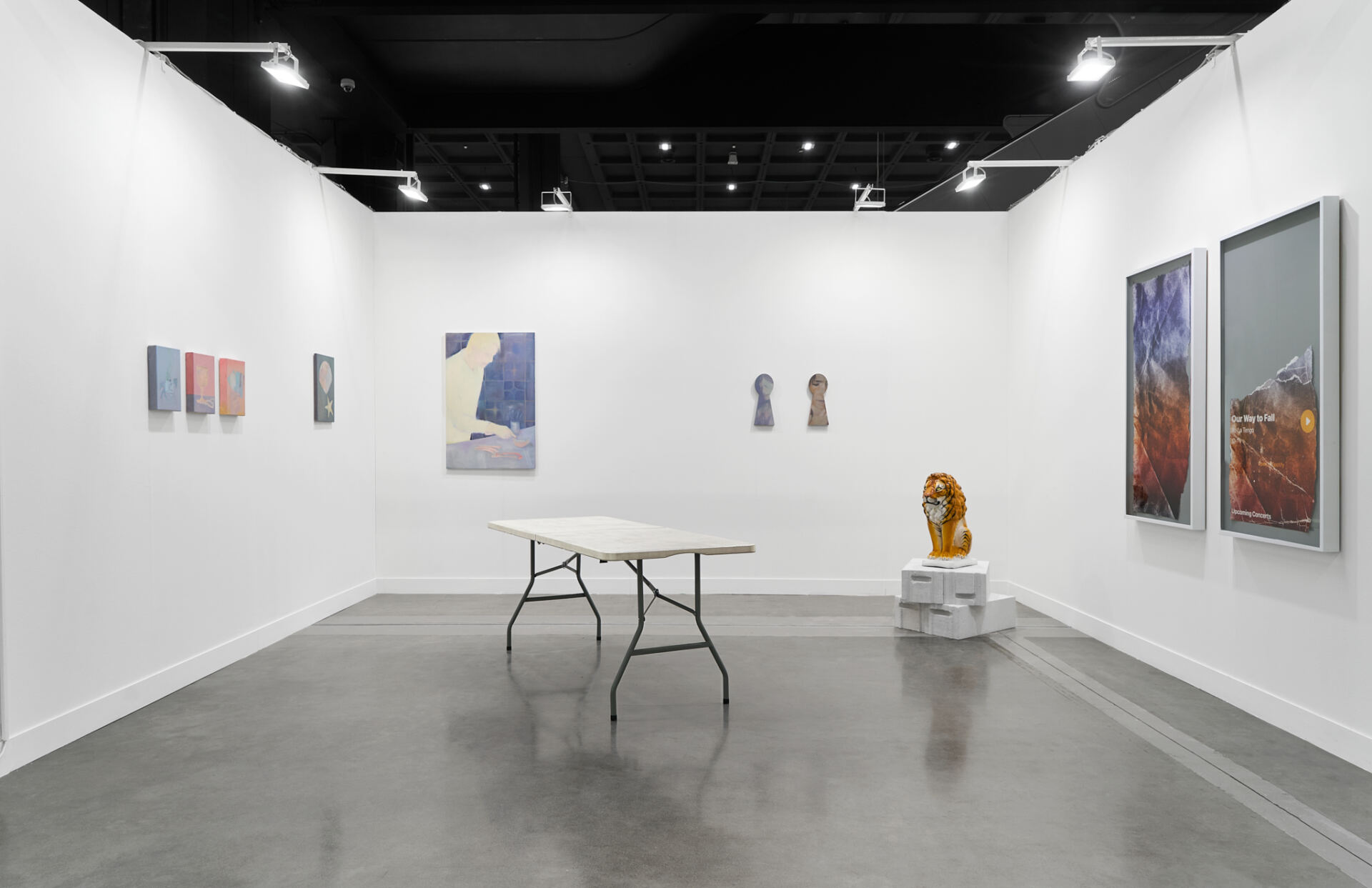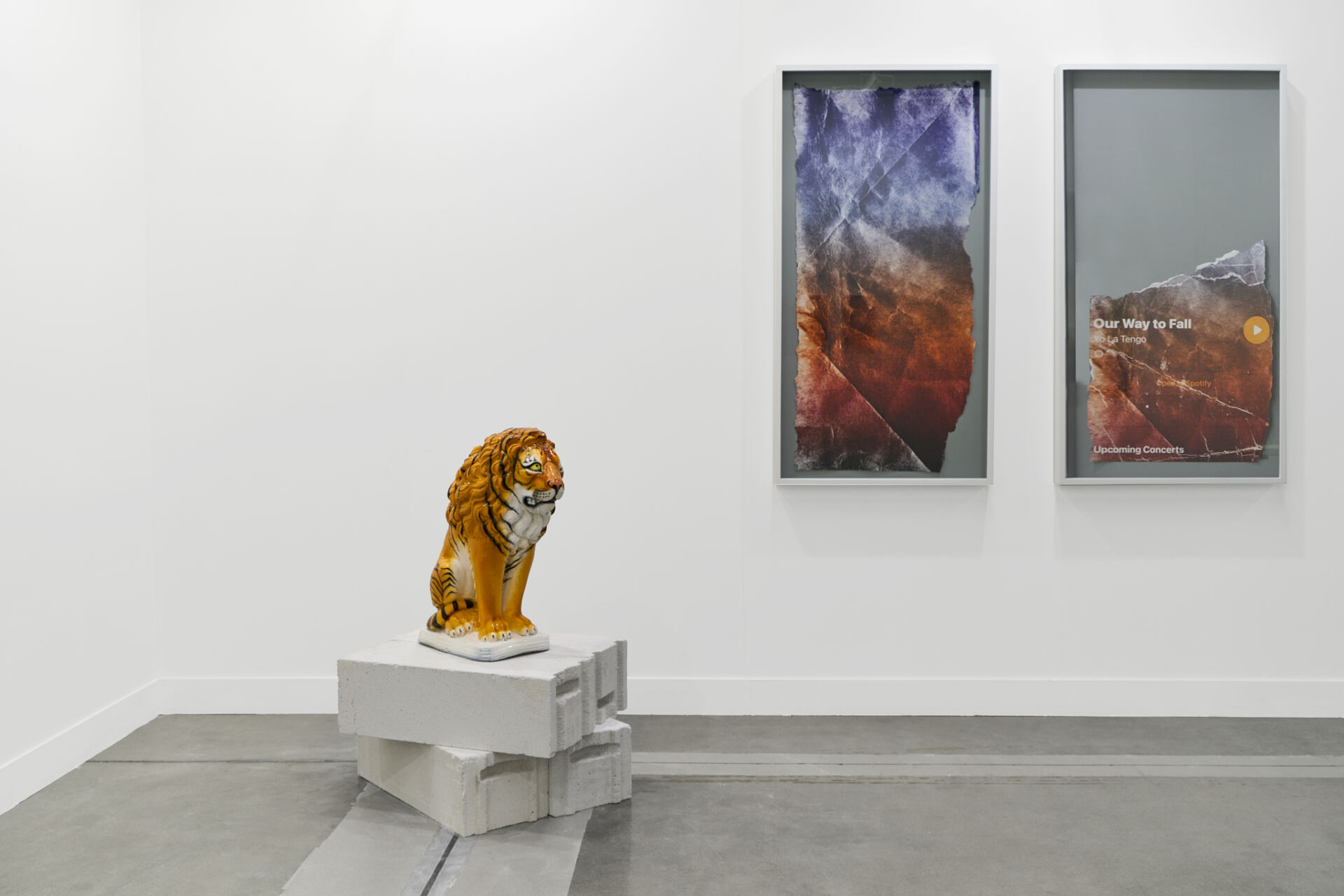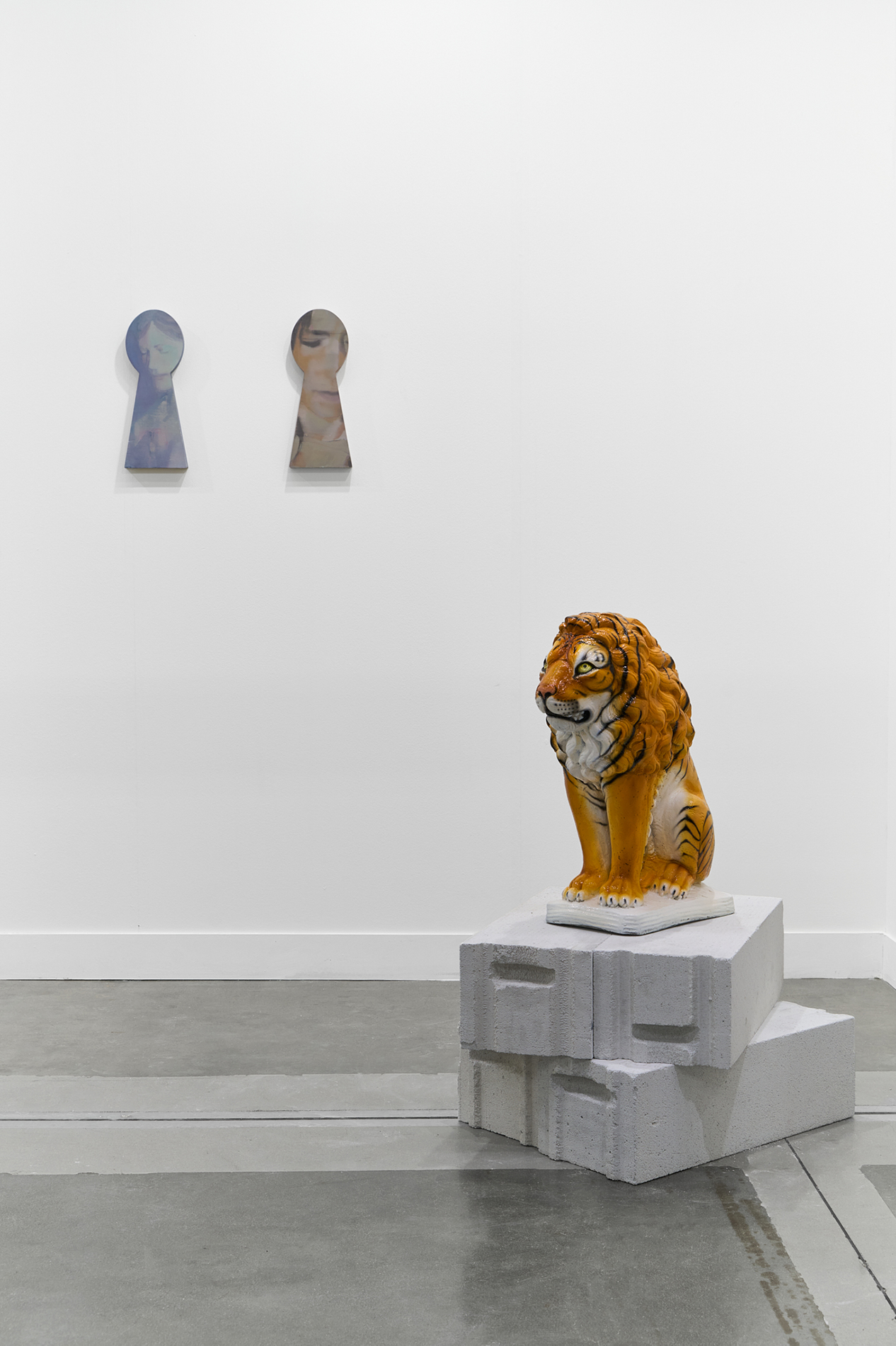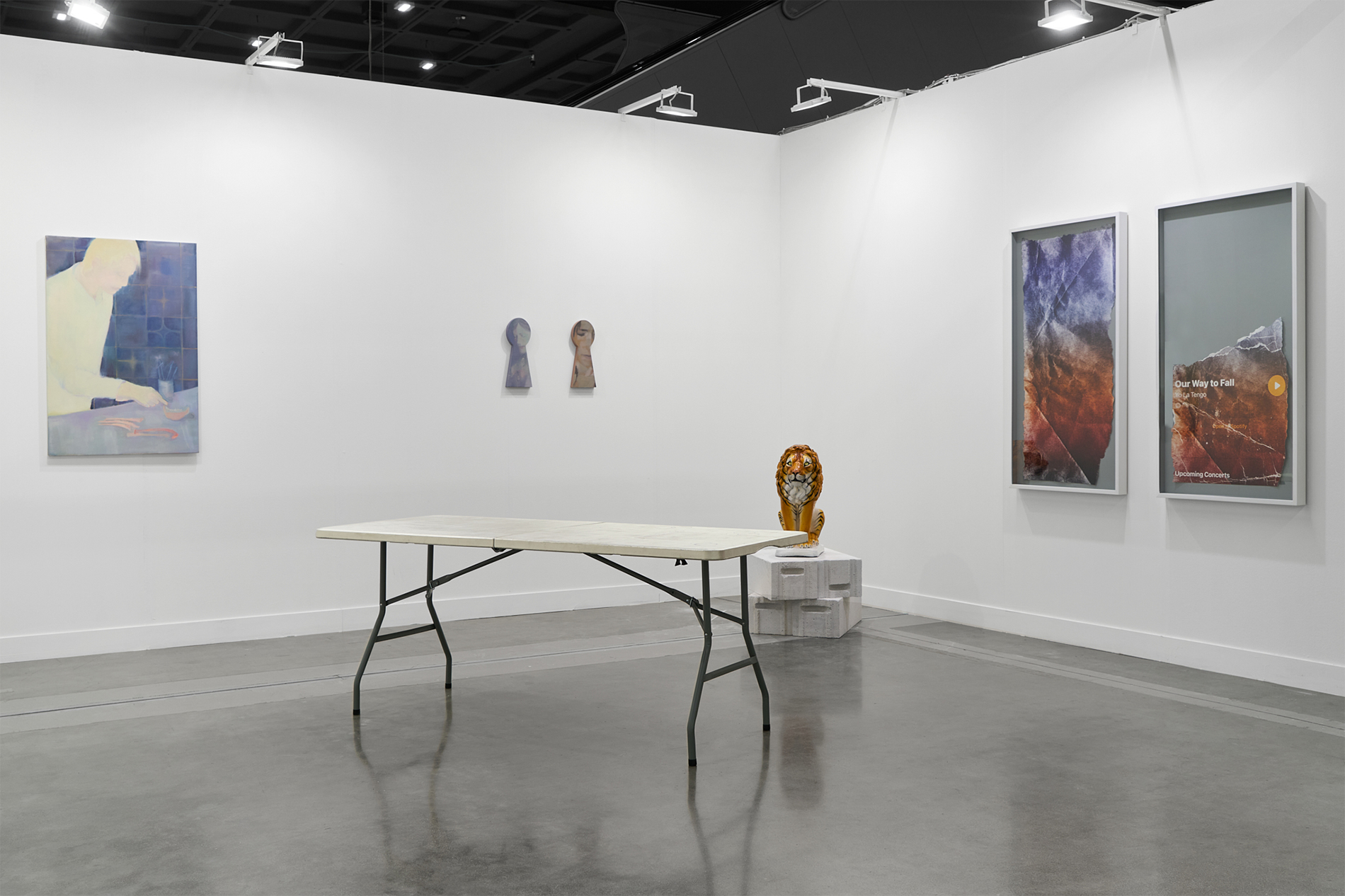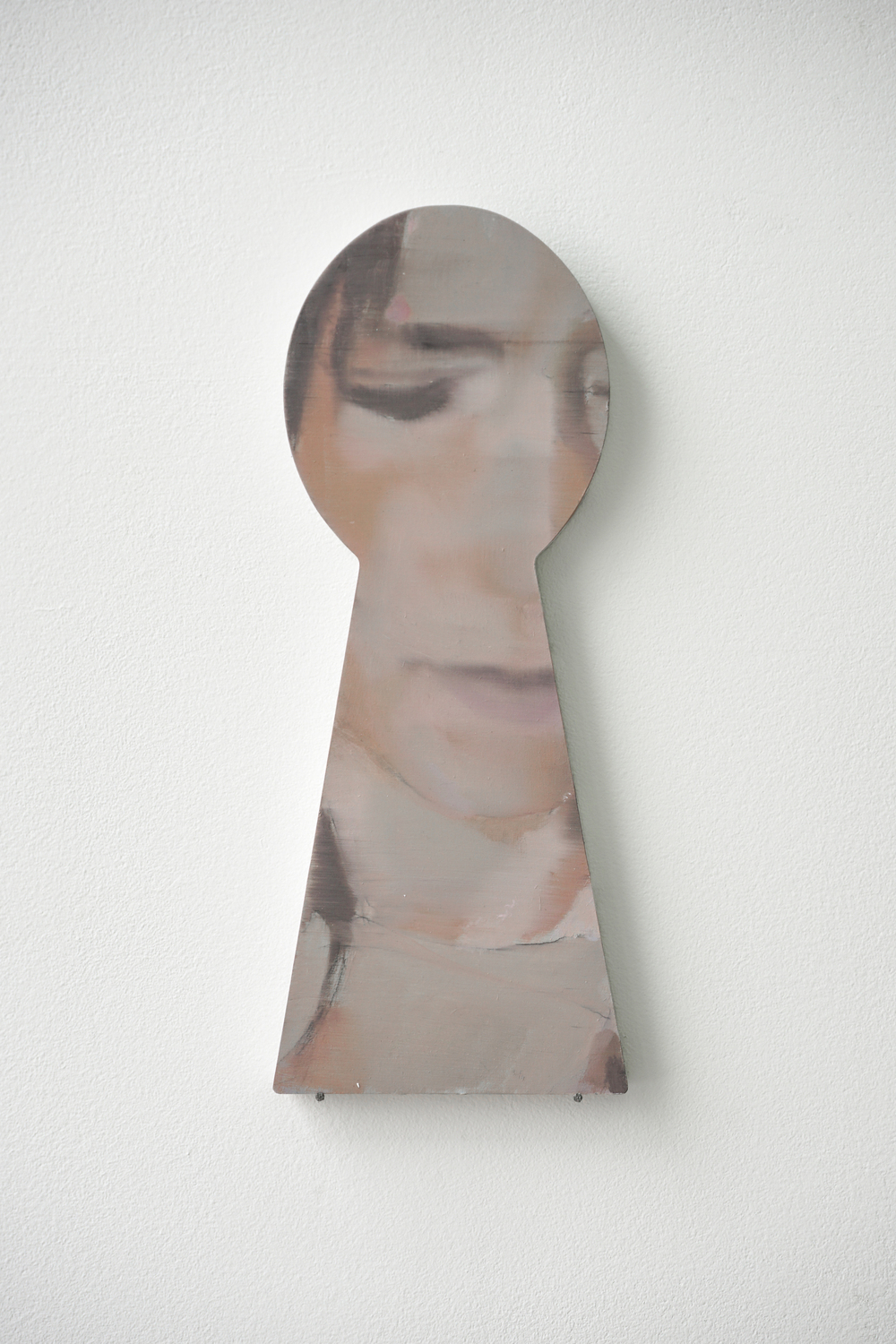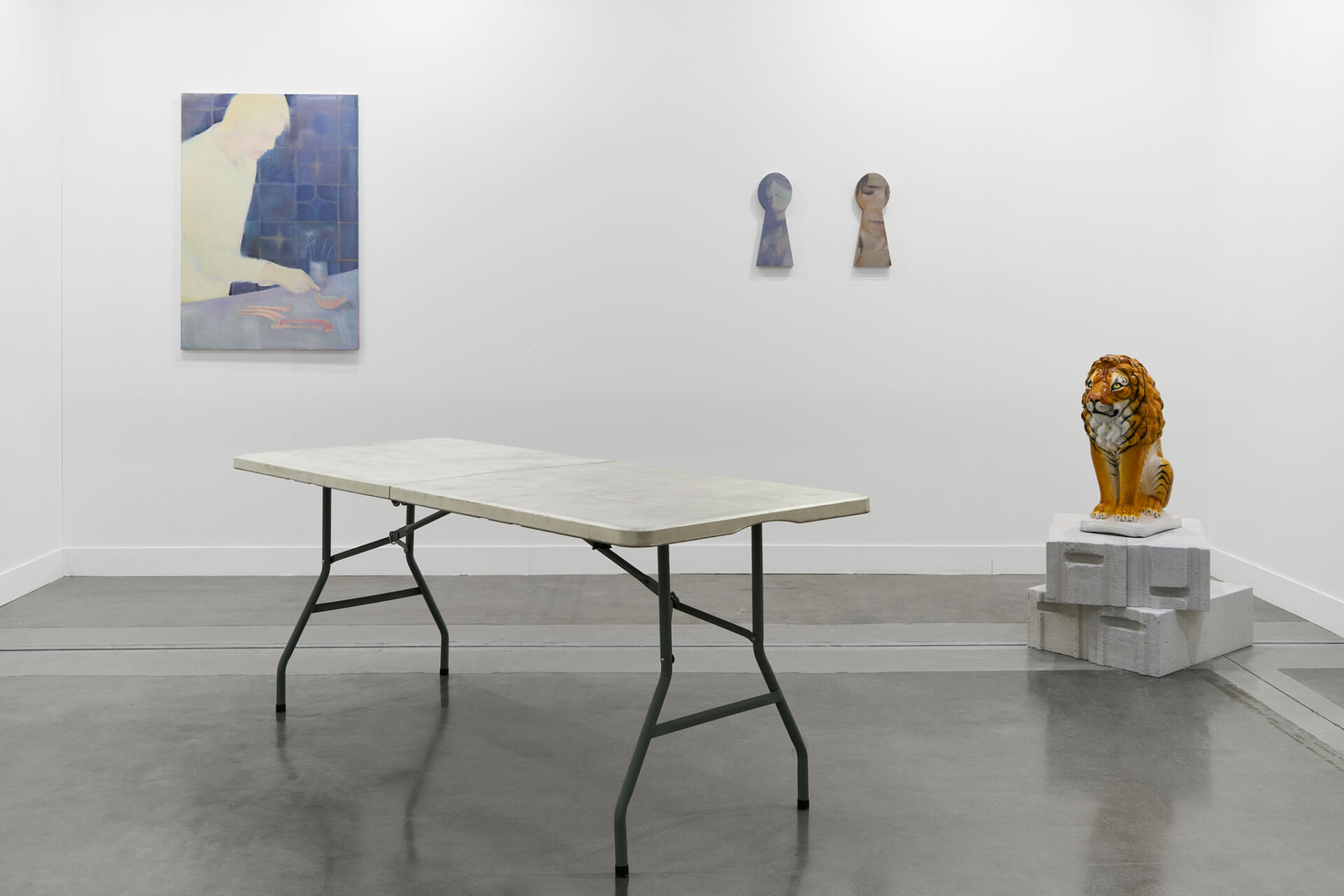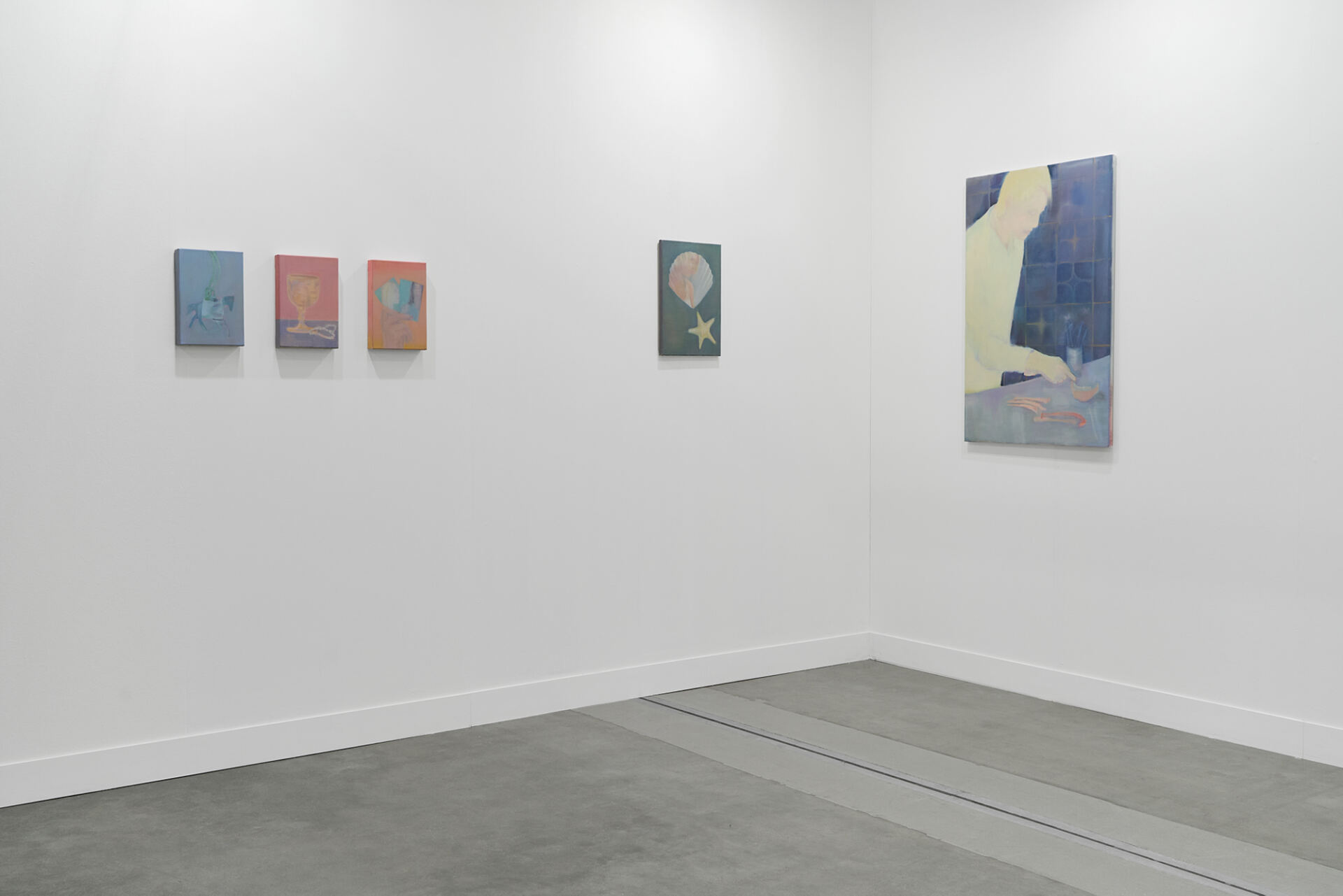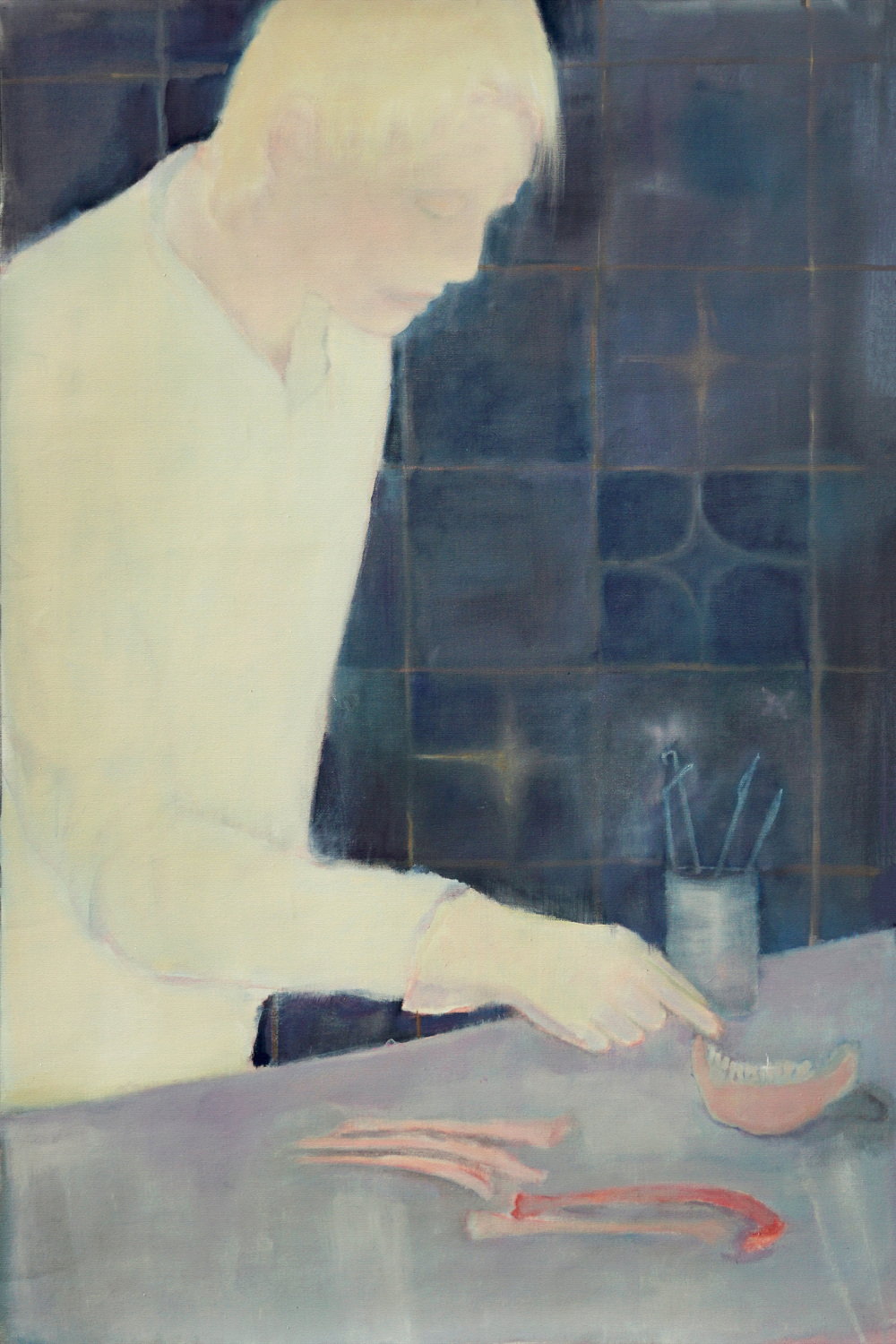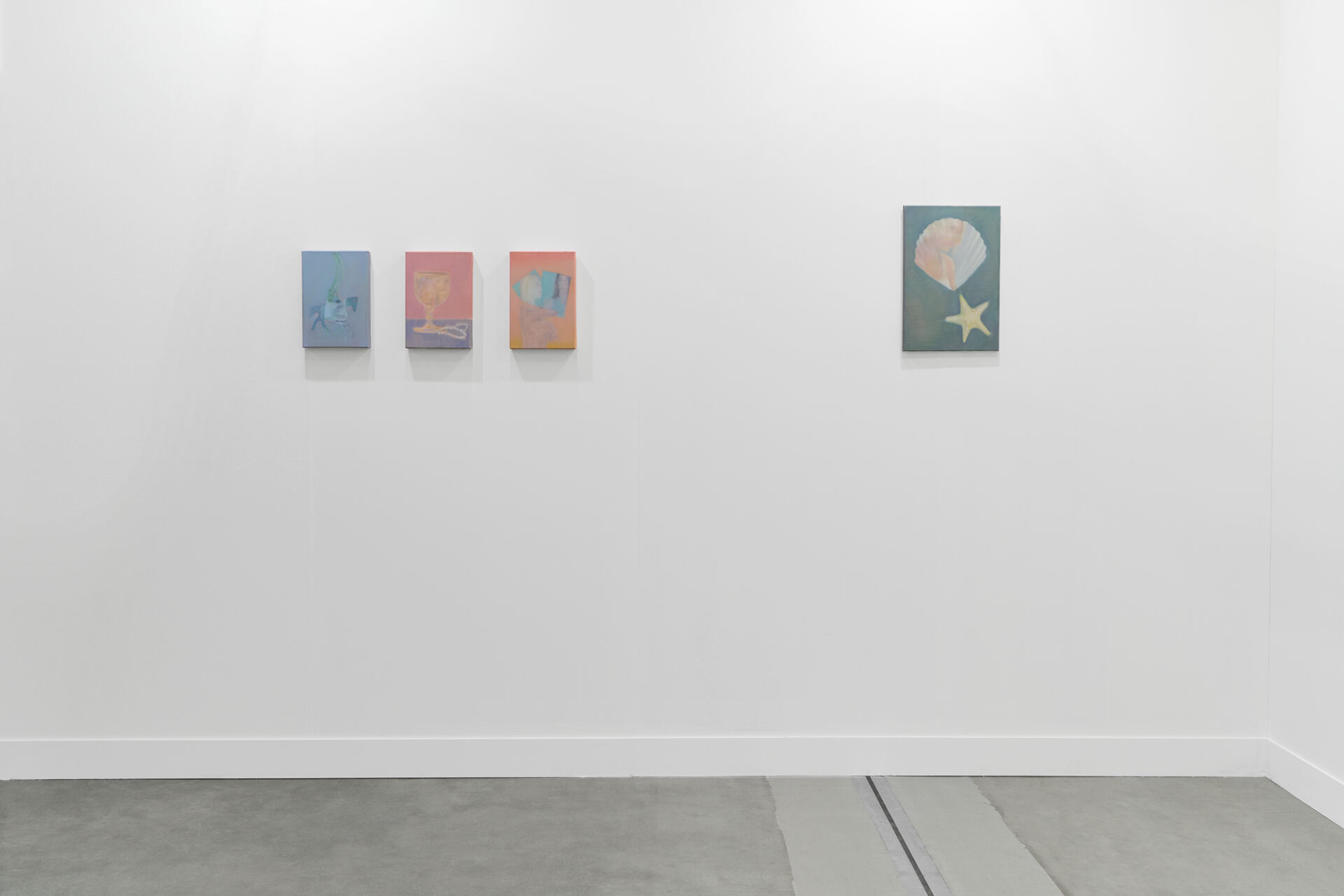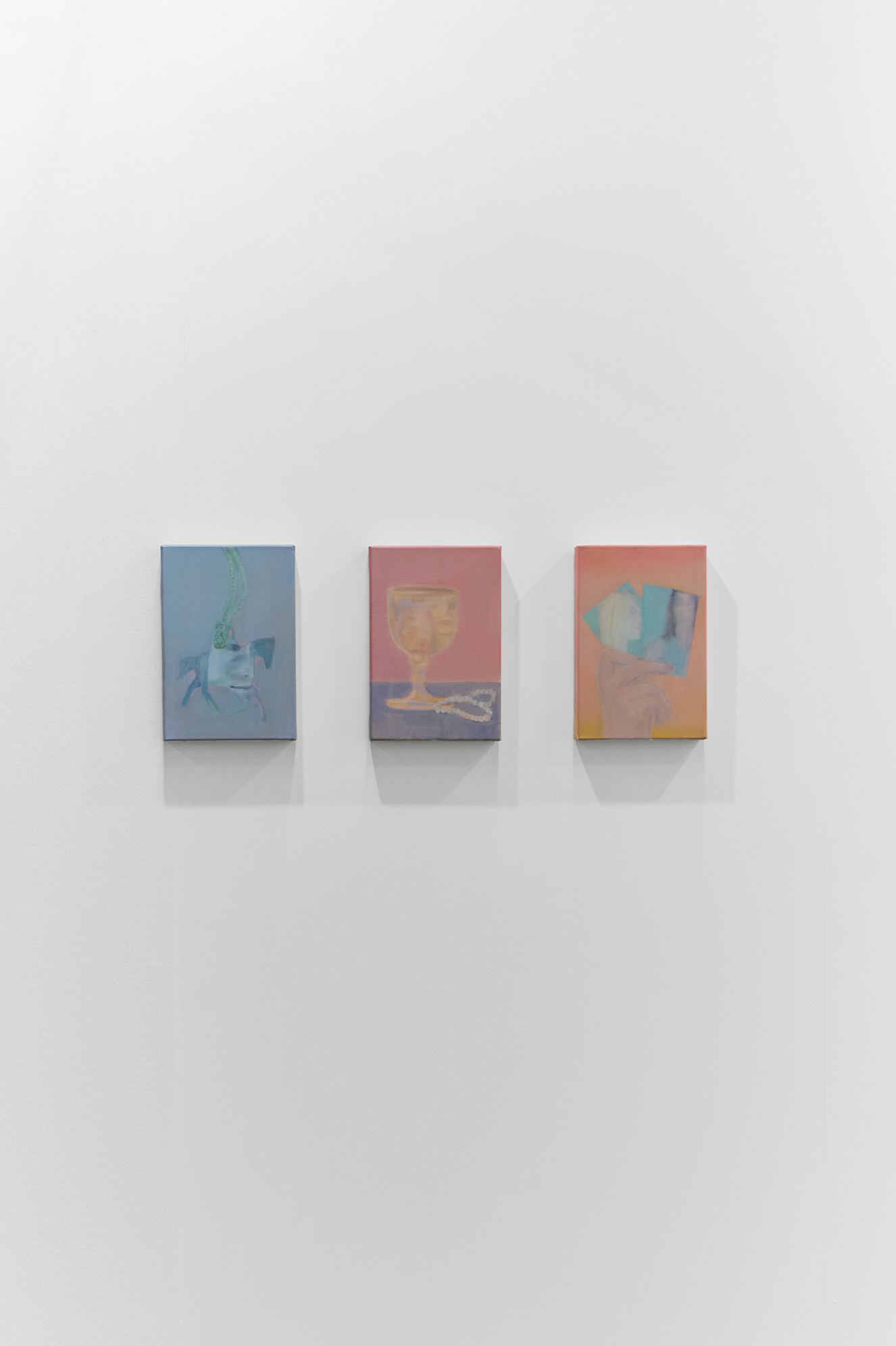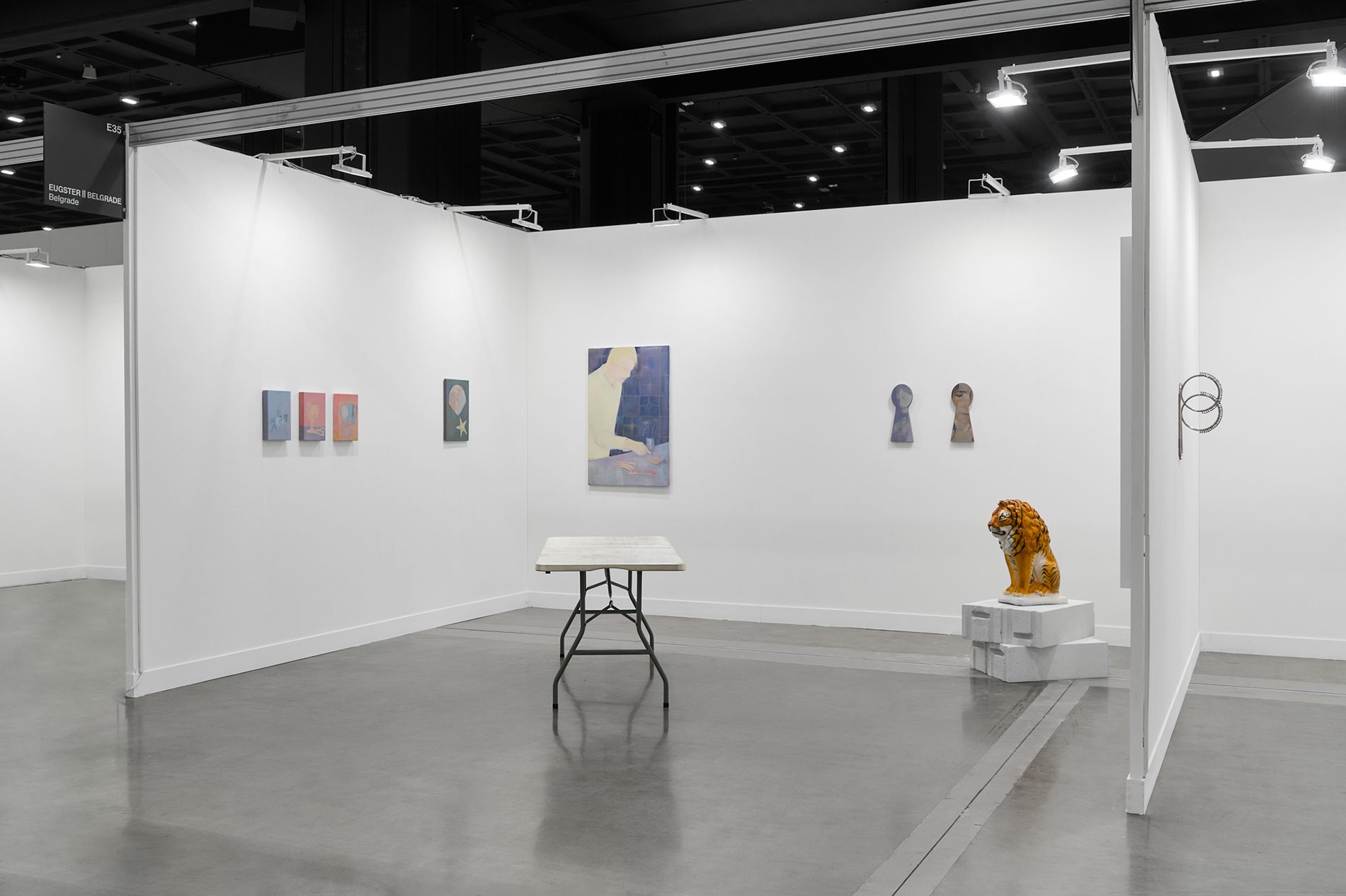Fair
Eugster || Belgrade’s booth at miart proposes a dialogue between works by Marko Obradović (1998, Belgrade) and Saša Tkačenko (1979, Zagreb), that reflect on ways of communal living and its shortcomings in current social structures.
Saša Tkačenko works with associative images, sculpture and installation, reaching from a place of collective memory and nostalgia in order to bridge a closer connection to dynamic movements in contemporary society. Coming from a personal attachment to the references that he uses, which render most of the motifs as a part of a bigger whole, and by using extracted parts like song lyrics, color combinations, and image grabs, Tkačenko assembles objects evocative of phantom-feelings. Not only pertaining to emotional bonds, the defining parts of the works are also extracts and leftovers of systems existing in late-stage capitalism and socio-political contexts, and hopeful reminders of utopias that we can only perceive in pieces. A new production of a table which takes up physical space but strips the object of its function, carries with itself marks of mythical usage on a precious surface, but still reflects on a moment of collective gathering through its familiar scratch marks. In a new series of wall works, Tkačenko proceeds to use screenshots of songs from apps as familiar visual recordings and combining textures and prints with various materials.
Following along the lines of collective testimonies and shared imagery, how it is dependent on influences of different cultures, Marko Obradović shares new work that deals with spiritual ties to images and objects. As we could see from his older works, he has always been interested in portraying situations that contain hints of raw, muddy and sometimes ominous energy that can be found in the human or a-human. In this case, Obradović chooses trinkets or talismans, as the titles reflect, that invite us to think about mythologies, symbolism and belief systems that they carry. Similarly, the now expanded Keyhole series draws us inward, opposite of a voyeuristic approach, but rather into ourselves, through symbolically shaped portals. The paintings are pleasing in color and dreamlike settings, but they also eagerly make us question the systems in which we take part as communities or individuals. They invite us to analyse and pick the bones of the systems as much as we engage with them.
The process of the making of a myth is also a relevant starting point for any social structure, then more comparable to a thought spun out of control, sometimes even more so when it warps and deviates. Not to say that it does so by itself, but the handling is taken over always, through power. This dialogue between Marko’s and Saša’s works starts with questioning of where the power comes from, how it shapes networks, hiearchies, corporate and economical power, and then delves into all that (those) it leaves behind.
